The various pressures and responsibilities faced by workers in the construction industry can lead to high levels of emotional stress. Whether your role is in an office, onsite supervising a crew, hands-on, or a combination of these, it’s likely that you face physically and mentally demanding work that takes place in fast-paced environments that often require you to devote long hours, overtime, or even travel.
The nature of construction work is such that social interaction and collaboration are often necessary to get the job done. Interacting with co-workers, superiors, subordinates, the general public, and workers from other trades can be a daily requirement that can lead to disagreements or conflict. When work is slow and workers face layoffs, stress doesn’t necessarily go away, either. Construction is known for income instability, an added stressor to an already tough line of work.
For all of these reasons, emotional burnout is highly common among construction employers and employees, and unfortunately, many work settings don’t have the proper supports in place to identify workers who are at risk (or in need of intervention) and provide the resources necessary to prevent burnout from escalating into a more serious emotional crisis.
Some employers and employees may turn to negative coping strategies, such as the use of alcohol, prescription pain killers, gambling, and other unhealthy behaviours to attempt to de-stress and take the edge off after a long workday. It is not uncommon for workers at all levels in this industry to arrive to work intoxicated or under the influence, placing them and others at risk of accidents or injuries. The use of negative coping skills also inevitably affects workers and employers in terms of maintaining healthy personal and family relationships.
The consequences of stress and burnout extend to practically all areas of emotional, personal, and social functioning, and can ultimately impact work performance and place employers’ and employees’ jobs in jeopardy.
Identifying if you (or your employees) are at risk of burnout, or already experiencing its effects, is critical in the process of prevention and/or treatment. There are 10 primary warning signs to look out for, which include:
- Changes in work performance or productivity (e.g. lack of motivation, poor performance, poor concentration, forgetfulness, appearing unfocused or “out of it,” difficulty completing tasks from start to finish, becoming easily overwhelmed with work tasks)
- Cynicism and defensiveness towards other people or situations in the workplace (e.g., believing that others have bad intentions, jumping to negative conclusions)
- Becoming detached from others or isolating (e.g., eating alone, avoiding interactions with colleagues or co-workers)
- Changes in sleep patterns and/or appetite (e.g., sleeping too much or not enough; eating too much or having a poor appetite)
- Irritability towards others at work
- Relationship difficulties (e.g., arguing or having conflict with a spouse or romantic partner, difficulty feeling emotionally “connected” with loved ones)
- Getting colds or cases of flu often (which could be signs of a compromised immune system)
- Panic attacks while at work, triggered by situations that never previously caused anxiety
- Sadness or signs of low mood (e.g., appearing tired, sombre)
- Becoming highly “sensitive” or easily offended (e.g., taking work-related comments/criticisms from a superior personally, inability to “let things go” and move on after conflict)
Awareness of these warning signs of emotional burnout is key to knowing if you need to intervene and provide your employees with the support and professional help they need. Ultimately, both the company and workers alike benefit from a work environment where burnout is effectively targeted. Developing self-awareness of these potential warning signs is also important so that you can take action to address emotional burnout immediately if you find that you’re struggling with it yourself. Below we’ll discuss 5 actionable tips that can be effective for self-help purposes, as well as for employers managing workers struggling with burnout.
1. Self-care
This can include participating in hobbies, sports, or any enjoyable activity that promotes well-being and provides a sense of meaning outside of work activities. Daily self-care is critical for preventing or alleviating emotional burnout. Educational material on the benefits of self-care can be provided to employees.
2. Drug and alcohol education
While prescription medication provided by a physician can aid in recovery from mental symptoms related to emotional burnout, alcohol, drugs, or misused prescription narcotics can cause a person to go from burnout to a total mental health crisis due to the various brain chemicals that are impacted when alcohol or drugs are abused. Employers must provide information on resources, such as local Alcoholics Anonymous (AA) or Narcotics Anonymous (NA) groups or other treatment options for workers who are at risk. Members covered under the BCCAEBT plan have access to their EAP and MindBeacon.
3. Encourage breaks, vacations, and paid time off
Workers who are rested and take scheduled breaks throughout the workday will perform higher quality work in a more timely, safe, and efficient manner. If you refuse or avoid breaks, vacation, or time off, even when it is available to you, this could sometimes indicate “workaholism” plus, it can put you or your employees on the speed lane towards emotional burnout.
4. Maintain a healthy diet
Research has long pointed to a relationship between diet and emotional health. Although it is not always feasible to influence the way other people eat, you can certainly monitor your own eating habits and make sure to consume the proper nutrients, especially when under high levels of stress. Comfort foods may “feel good” to eat, but could make symptoms like sadness, low mood, and anxiety worse. Employers should make efforts to ensure that employees have access to healthy food options either on job sites or nearby.
5. Encourage a work environment of support and comradery among co-workers.
On construction sites and in corporate settings, conflict is often inevitable. So expecting that everyone will get along all the time is not always realistic. However, social support in the workplace can be a significant way to circumvent burnout. Employers can help by organizing social activities or other opportunities for employees to interact outside of the work environment.
References
Mayo Clinic. (2021). Job burnout: How to spot it and take action.
https://www.mayoclinic.org/healthy-lifestyle/adult-health/in-depth/burnout/art-20046642
Schneider, S. (2015). Addressing the root of the stress problem in construction. Laborers Health
and Safety Fund of North America. 12(4). https://www.lhsfna.org/index.cfm/lifelines/september-2015/addressing-the-root-of-the-stress-problem-in-construction/





